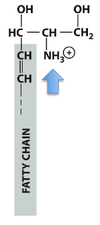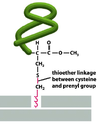BIOL 360 (Cell Biol) Flashcards
Who came up with the cell doctrine?
Schwann, Schleiden, and Virchow.
What is the cell doctrine?
- All organisms are made up of 1 or more cells; 2. Cells are distinct units with specific tasks; 3. 1 cell can only come from another cell by division
Who was the first to observe living cells?
Antony van Leeuenhoek (17th-18th century).
Who was the first to describe cells?
Robert Hooke (17th century).
What are the 3 most highly conserved gene families among all 3 domains of life?
- Translation; 2. Amino acid transport and metabolism; 3. Coenzyme transport and metabolism
What features are unique to archaea among all 3 domains of life?
- May have branched hydrocarbons in membrane lipids; 2. Some can live above 100 degrees C
Which domain(s) include cells with a nuclear envelope?
Eukarya.
Which domain(s) includes cells with membrane-enclosed organelles?
Eukarya.
Which domain(s) includes cells with peptidoglycan in their cell walls?
Bacteria.
Which domain(s) includes cells with branched membrane lipids?
Archaea.
Which domain(s) includes cells with several kinds of RNA polymerases?
Archaea and Eukarya.
Which domain(s) includes cells with only one kind of RNA polymerase?
Bacteria.
Which domain(s) includes cells that use F-Met as an initiator for protein synthesis?
Bacteria.
Which domain(s) includes cells that use unmodified Met as an initiator for protein synthesis?
Archaea and Eukarya.
Which domain(s) includes cells with genes containing introns?
Archaea (a few) and Eukarya.
Which domain(s) includes cells whose growth is inhibited by streptomycin and chloramphenicol (antibiotics)?
Bacteria.
Which domain(s) includes cells that have histones associated with their DNA?
Archaea (some species) and Eukarya (all species).
Which domain(s) includes cells with a circular chromosome?
Bacteria and Archaea.
Which domain(s) includes cells that are able to grow at temperatures above 100 degrees C?
Archaea.
What 4 basic features must all cells have?
- DNA; 2. Plasma membrane; 3. Ribosomes; 4. Cytosol
What organelles are found in animal cells, but not in plant cells?
Centrosomes, centrioles, and lysosomes.
What organelles are found in plant cells, but not in animal cells?
Cell walls, the central vacuole, chloroplasts, and plasmodesmata.
What pH levels are found in different parts of the mitochondria?
- Matrix: pH 7.5-7.8; 2. Intermembrane space: 6.8-7.0 (relative to cytosol, pH 7-7.5)
What pH levels are found in different parts of the chloroplasts?
- Stroma: pH 8; 2. Thylakoid space: pH 5 (relative to cytosol, pH 7-7.5)














